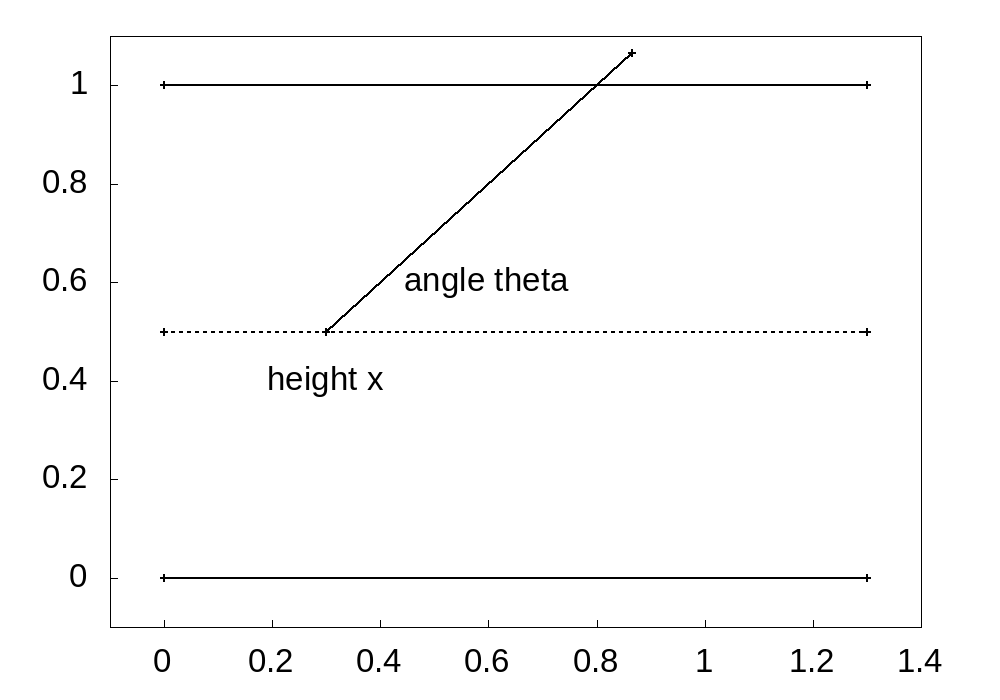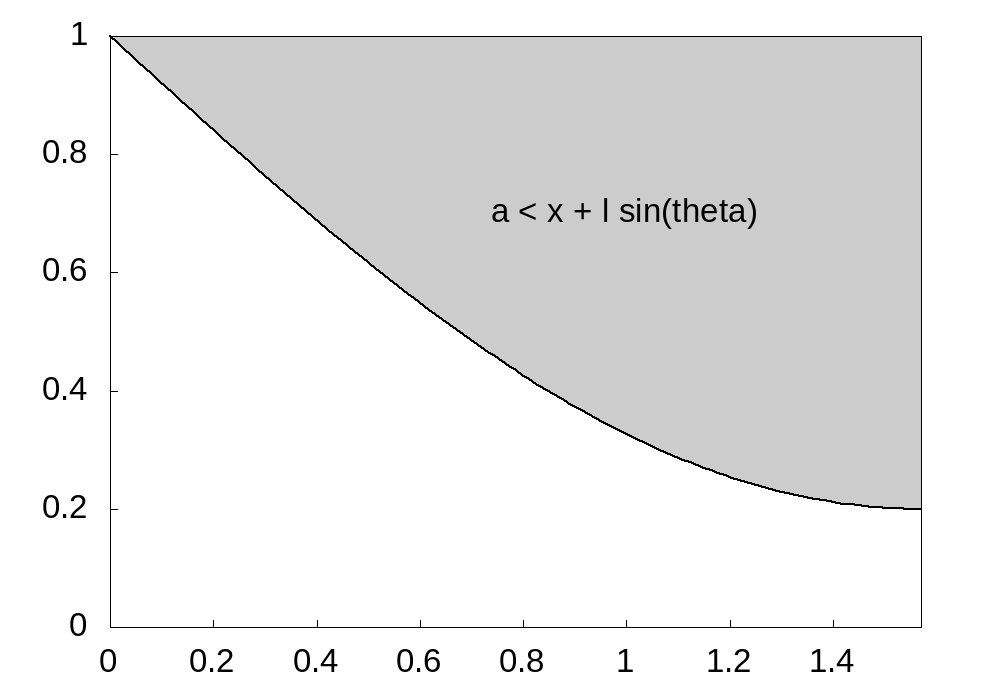aez-notes
Buffon's Needle
A table of infinite expanse has inscribed on it a set of parallel lines spaced \(2a\) units apart. A needle of length \(2l\) (smaller than \(2a\)) is twirled and tossed on the table. What is the probability that when it comes to rest it crosses a line?
We describe the position of the needle by the height of the midpoint and the angle. Let 0 height be between two lines and the midpoint be at height \(x\). It is sufficient to consider positions of the midpoint \(x \in [0,a]\) and angle \(\theta \in [0,\pi/2]\). We assume \(x\) and \(\theta\) have a uniform distributions over their domain. Under this setting, the highest point of the needle is at \(x + l \cos \theta\). The following figure illustrates the set up of the problem

and region of parameter space that corresponds to the needle crossing the line.

Then a simple integral shows the solution
\[ \frac{2l}{a\pi} \]
load(draw)$ a : 1; l : 0.8; x : a - 0.5; th : %pi / 4; h : 1.3; draw( gr2d( border = false, color = black, line_width = 2, points_joined = true, line_type = dashes, points([0,h],[0,0]), line_type = solid, points([0,h],[a,a]), points([0.3,0.3 + l * cos(th)],[x,x + l * sin(th)]), line_type = dots, points([0,h],[x,x]), font = "Arial", font_size = 25, label(["height x", 0.3, x - 0.1]), label(["angle theta", 0.6, x + 0.1]), xrange = [-0.1,h + 0.1], yrange = [-0.1,a + 0.1] ) )$ draw_file( terminal = 'png, file_name = "problem-53-a", dimensions = [1000,700])$ kill(x, th, h); draw( gr2d( border = false, fill_color = grey80, x_voxel = 20, y_voxel = 20, region(a < x + l * sin(th), th, 0, %pi / 2, x, 0, a), color = black, line_width = 2, explicit(a - l * sin(th), th, 0, %pi / 2), font = "Arial", font_size = 25, label(["a < x + l \sin(\theta)", 1.0, 0.7]) ) )$ draw_file( terminal = 'png, file_name = "problem-53-b", dimensions = [1000,700])$ kill(all); total_area : a * %pi / 2; sol : l * integrate(sin(th), th, 0, %pi / 2) / total_area; print(sol); /* 2 l ----- %pi a */